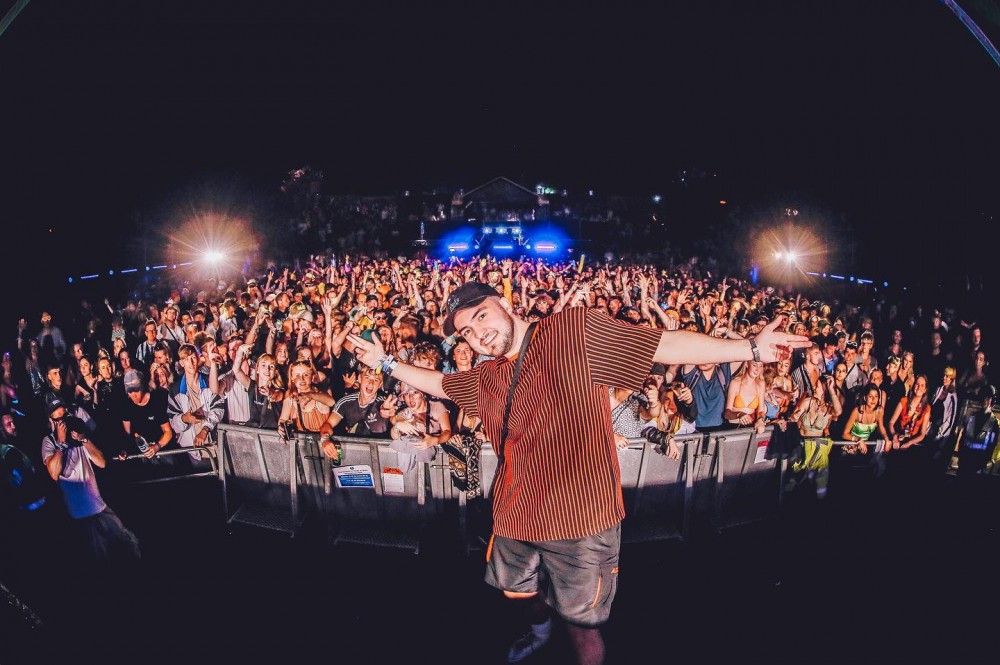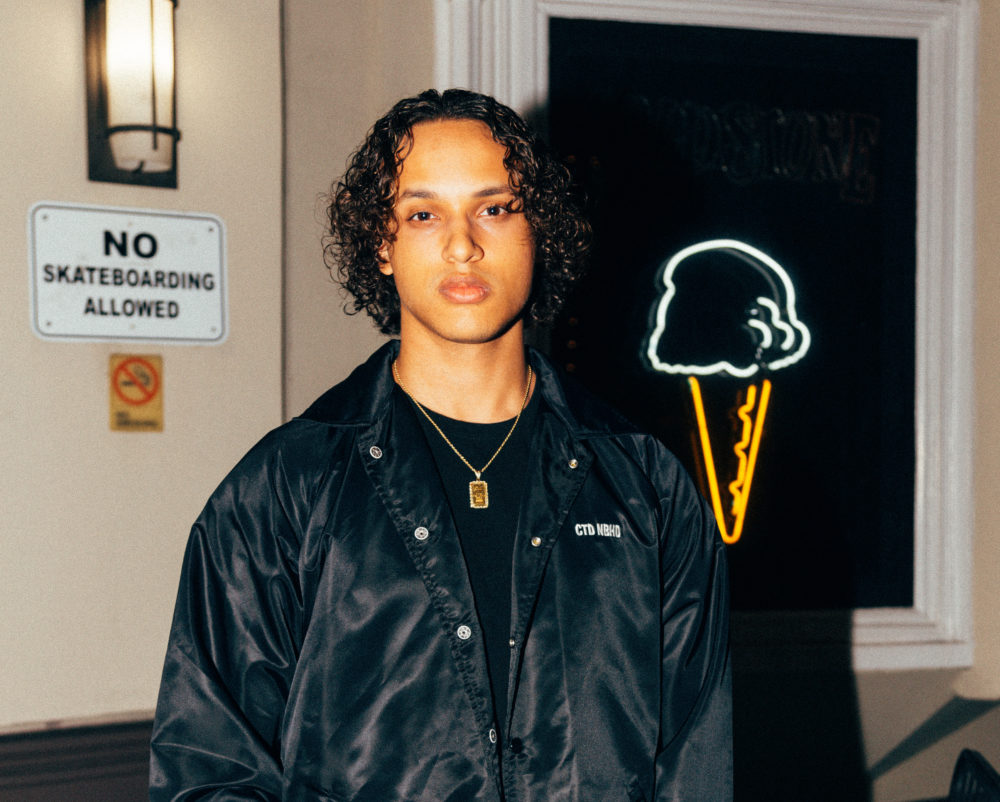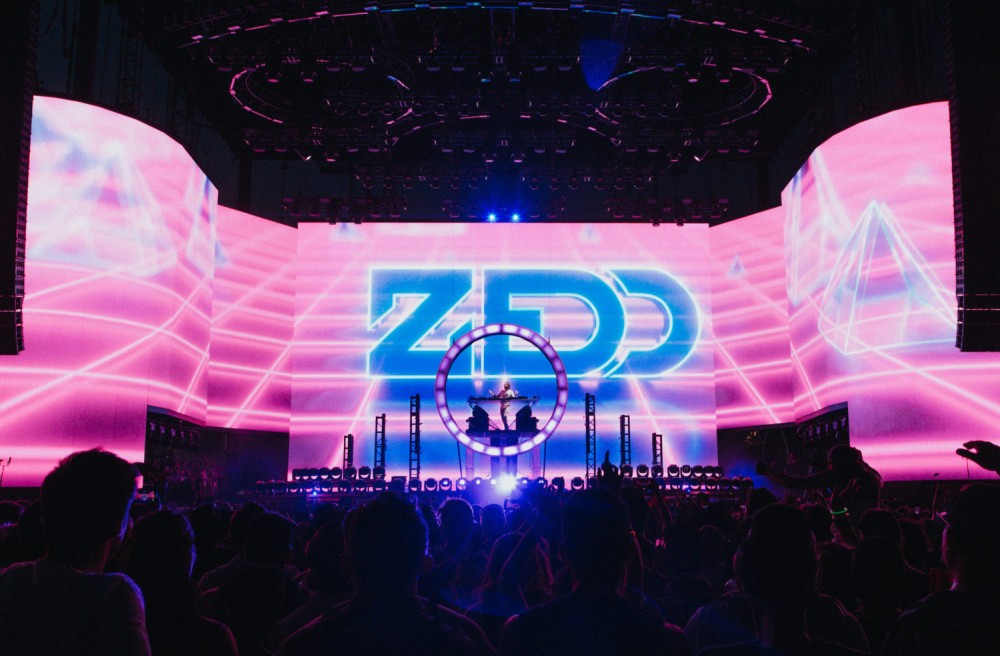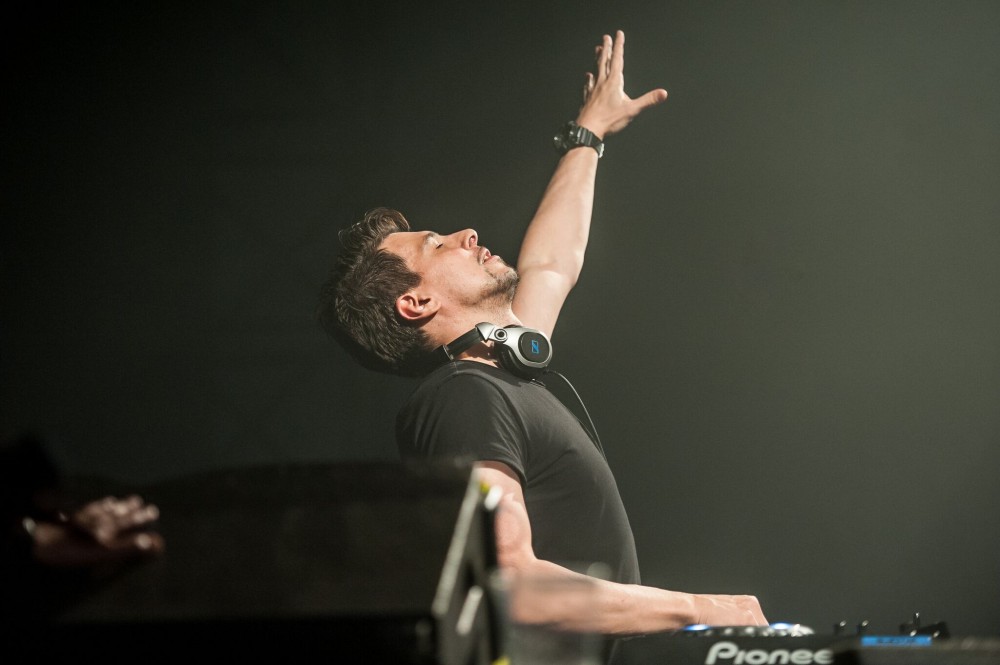
Kanine, Philth, and more celebrate massive 60-track Drum&BassArena 2019 [Q&A]
Birthed out of the UK’s early ’90s jungle scene and rapidly gaining mainstay status shortly after, drum ‘n’ bass has celebrated its popularity at its heights notably in concentrated pockets—although never quite enjoying the mainstream bliss of its newer peers like dubstep and trap in the U.S. However, the veteran genre has shown resilience and a particular resurgence in the past few years as first-time listeners tread new territory, devoted fans continue to push its popularity, and both the underground scene and festival circuit champion diverse forms of drum ‘n’ bass on its stages.
Now, drum ‘n’ bass follows suit in the massive growth of the electronic dance music scene as a whole, but with its own persuasive milestones that signal it intends to stay whether or not the EDM bubble bursts. 2019 has been a particularly telling year for the genre’s success, from it experiencing the most growth of any EDM genre on Beatport until now, to trending when Adele joked about making her own drum ‘n’ bass album. The genre is once again hitting its cyclical sweet-spot in the industry; Pendulum has new music in the works, Chase & Status celebrated 15 years together with the release of RTRN II JUNGLE, and newcomer Benny B landed the genre’s first-ever No. 1 on Beatport.
As drum ‘n’ bass nears 30 years of existence, the scene finds itself in a uniquely exhilarating space where it’s simultaneously unbound by genre limitations and empowered by young and old blood that evolve the sound while maintaining its roots in the underground. All of this finds itself translated in Drum&BassArena 2019—Drum&BassArena’s long-standing annual album, chock-full of 60 tracks, seven exclusives, and a bold appreciation of the multifaceted talent built across generations of drum ‘n’ bass. Recognizing another year of the genre and its momentous acts, EDM All Day has curated a round table discussion from a selection of Drum&BassArena’s most anticipated and coveted artists: Kanine, Simula, Philth, and Becca Jane Grey.
Read our Q&A and listen to Drum&BassArena 2019 below. Check out bonus questions for Kanine at the end of the round table Q&A.
Have there been any noticeable shifts in the drum ‘n’ bass scene in recent years and if yes, why do you think so?
Kanine: Definitely. I think everyone can agree most of the sub-genres have opened up and the lines between them have blurred. I think this is due to two things. Firstly, I think there’s been a change in opinion in the ravers/fans where people now tend to be more open-minded and don’t just listen to one main sub genre. This is probably because of how easy it is to access new and different music nowadays through streaming platforms. Secondly, I think across all styles of drum ‘n’ bass, the production value has increased drastically making it easier to appreciate previously un-preferred music styles.
Simula: In the last few years I’ve noticed a rise in popularity of a new style that people have affectionately dubbed “foghorn rollers,” a style pioneered by artists like Benny L and Serum. It is a hybrid style, incorporating elements from jungle and jump up as well minimal. Many of the new generation producers are now making this style and pushing it.
Philth: One interesting and very positive development in recent years is the new generation of artist-run labels: 1985, Sofa Sound, Guidance, The North Quarter, Ish Chat, Index… This is a generation of producers who came through around a decade ago and changed the game with their production skills and style, the bar was raised by Alix Perez and the Shogun camp, DLR, Ulterior Motive, Lenzman. Now they are running labels and using their platforms to push things forward again, getting new music out quickly and taking risks that the established bigger labels might be afraid to take. It’s refreshing the scene, and these guys are bringing through a new generation of artists now to continue that breath of fresh air.
Becca Jane Grey: There have been shifts in different aspects of the scene. Consumption, for one; we’ve become a culture of quantity over quality, pressing two tunes per side on vinyl, good music seems forgotten about quickly and doesn’t stay too long in rotation. There aren’t many modern classics. There are novelty songs that do the rounds, bootlets etc. (nothing wrong with these but) they seem to be more popular than original tunes. The throwaway culture doesn’t allow for a good tune to develop in a club environment unless it’s a hyped dub.
Drum ‘n’ bass has both influenced and taken influence from a diversity of other music genres. Name your top three classic drum ‘n’ bass songs as well as three songs that have inspired you heavily (regardless of genre).
Kanine: Hard pick but my top three would probably be “No Problem” by Chase and Status, “Time Warp VIP” by Sub Focus, and Pendulum’s “Tarantula.” All three are undeniable anthems that will always stand the test of time. So much great music out there so couldn’t possibly pick another three, but I’m a massive fan of techno hip-hop and basically all other bass music. All have inspired me a lot.
Simula: My top three classic drum ‘n’ bass songs are DJ Fresh’s “All That Jazz,” Netsky’s “Pirate Bay,” and Technicolour’s “Ascension.” These are all tunes that got me into drum & bass so they had to be mentioned. The three songs that have inspired me the most are Konichi’s “Field Of Vibrations,” Neosignal’s “Planet Online (Culprate Remix),” and Decimal Bass’ “Dronezone.” All of these tunes have had a huge impact on my work and are still mind-blowing to me to this day.
Philth: Ed Rush & Optical’s “Medicine (Matrix Remix),” Marcus Intalex & ST Files’ “Love & Happiness” and Konflict’s “Beckoning.” Also Fleetwood Mac’s “Everywhere,” Lynn Collins’ “Think (About It),” Amy Winehouse’s “Tears Dry On Their Own,” Max Richter’s “On the Nature of Daylight,” and Vangelis’ “Blade Runner Love Theme.”
Becca Jane Grey: High Contrast ft Diane Charlemagne’s “If We Ever,” Chase & Status ft Jenna G’s “In Love,” Lenzman ft Riya’s “Open Page.” Also James Blake’s “The Colour In Anything,” Cinematic Orchestra’s “To Build A Home” and Deftones ft Maynard’s “Passenger.”
With all the milestones this year, do you see drum ‘n’ bass crossing over into mainstream anytime soon?
Kanine: I think drum ‘n’ bass has always had its place in the mainstream. Acts like Sigma and Rudimental are needed to introduce (especially younger fans) to the genre. The less commercial scene has grown massively in recent years yes, but I feel that no matter how big it gets it will always retain its underground sound and feel because that is what defines the genre.
Simula: I would like to think so! With some of the most talented artists to date coming through at the moment, I can only see the quality of the music getting better. A lot has changed in the last five years and I’m excited to see what the next movement to push the scene forward will be.
Philth: Drum ‘n’ bass has flirted with the mainstream for a long time, going back 20-plus years ago to Goldie and Roni Size. Then we stop being cool for a while, and then the media decides to pretend we are on a comeback when really the genre has been pushing on in the underground forever. We had it again a few years back with Fresh, Pendulum, then Sigma, and you’re hearing drum ‘n’ bass in TV adverts again, but really I don’t care about what is happening on Top of the Pops as long as the underground is healthy… and right now we’re at a real high point and showing no sign of slowing down 🙂
Becca Jane Grey: Drum ‘n’ bass has always had a toe dipped in the mainstream. Or rather mainstream music always keeps its little finger in the drum ‘n’ bass pie. The genre is built from the underground, you can’t take that away from it, certain producers have made it more accessible to the masses by softening it up. Just like any other genre that ends up with its 15 minutes in the commercial scene, its because it’s being presented to the masses in a nicer, more gentle, pleasant way. Die-hard drum ‘n’ bass fans call any mainstream drum ‘n’ bass songs that they like “guilty pleasures.” For another cheesy simile, look at it like mainstream drum ‘n’ bass is like asking for a snakebite at the bar: you’ll still get served but the barman will be judging you silently. Producers like Sigma and Wilkinson for example will always bridge the gap between the genre and mainstream music.
Both drum ‘n’ bass and the sub-genres within drum ‘n’ bass itself have evolved tremendously since the early days, from liquid to dark, breakcore, jungle, neurofunk and more; the term “drum ‘n’ bass” has been expanding to encompass a lot of different meanings. For you personally, what is drum ‘n’ bass?
Kanine: Anything 160-180 BPM that has drums a b-line. There never has been and never should be any rules. If people like it then who cares!
Simula: Drum ‘n’ bass is music you can lose yourself in. It is an escape and a release. Everyone likes different sub genres and in my opinion that is a great thing. Anyone and any style is welcome in drum ‘n’ bass, and that is something truly special.
Philth: Breakbeats, dark rooms, big subs. Futuristic music, making you lose yourself on the dancefloor…. the anticipation as the DJ builds you up to the drop, then the satisfaction as the bass hits you in the chest. No other music is as physical as drum ‘n’ bass, and that sensation of being squeezed by bass is what hooked me on the genre as as kid and has never let go. No matter what sub-genre, it’s all about the bass really, isn’t it?
Becca Jane Grey: Drum ‘n’ bass is a melting pot of culture, angst, happiness, expression, euphoria. It’s the meeting of seemingly every type of person suddenly having something in common. The energy and emotion it stirs seems to connect us all in a similar way. For me, I enjoy the softer emotive side of a vocal-heavy drum ‘n’ bass tune, but spend more time these days listening to vocal-less, beat-heavy nastiness. And the latter definitely makes me run faster at the gym… The genre for me is the variety of sub-genres that we’re lucky to have, with talented producers spread across the board.
There’s no arguing that drum ‘n’ bass is virtually a mainstay of the UK dance music scene, but are there any other places that you’ve either played or been to that have burgeoning drum ‘n’ bass scenes? How has the fan base for drum ‘n’ bass changed throughout the years?
Kanine: The whole of Europe has pockets of drum ‘n’ bass fans of different sub-genres, and as an DJ it’s been lots of fun travelling and experiencing these different communities. Coming up through the jump up scene, I played a lot in Austria and Belgium in my earlier years. Austria has a wicked open minded crowd who tend to like any style you play for them. Events like Switch! XL and Mainframe in Vienna are always mad parties. Belgian ravers in the clubs prefer a certain jump up sound which I’ve strayed away from but the bigger Belgian events, like Rampage are some of the best parties in the entire world. In recent years I’ve spent a lot of time in the Czech Republic which has an amazing scene for drum ‘n’ bass – which is probably why they’re home to the biggest (and best!) drum ‘n’ bass festival in the world, Let It Roll.
This summer I’m doing my debut New Zealand and Australia tour which has completely opened my eyes to the global reach of drum ‘n’ bass. The demand for the genre down under is actually crazy and shouldn’t be slept on
Simula: Every country that has a drum ‘n’ bass is different from the next. I’ve played all over Europe in the last three years and it’s interesting to see the differences in the music and the ravers. One thing all these countries have in common is that there is a constant influx of younger listeners and ravers that influence trends in the music. I can see drum ‘n’ bass continuing to spread to new countries and new fan bases.
Philth: When I first started raving, it was primarily a UK thing, but nowadays it truly is a worldwide movement – every country you can think of will have a drum ‘n’ bass scene whether it is big or underground. The internet has helped to spread the music so rapidly and as artists social media helps us to reach new fans. I’ve played in the U.S., Australia and all over Europe and it’s always a special moment seeing people in a different country singing along to my music <3
I hope the current tragic political situation in the UK doesn’t restrict artists ability to travel and take our music to new places, I love meeting people in new cities, trying new food, experiencing different cultures all united by our love of bass. Just last month, I played an amazing party up a mountain in Spain and met a crew of DJs pushing a sick style of dark rollers – I live for these moments and hope we can continue to share these experiences with our European cousins.
There’s been an accelerating decline in nightclub venues with the number in Great Britain declining by 21 percent from December 2017-2018. What do you think this means for the underground scene, in particular drum ‘n’ bass?
Kanine: This is always really sad to see. The nightclubs, especially smaller ones, are the lifeblood of the drum and bass scene. It’s how communities, movements and sounds are born. Also, I think it’s important for society to have places were people can go express and enjoy themselves whether it be as a punter or as a DJ.
Simula: The UK is known for its underground music, from drum ‘n’ bass to garage to dubstep, they all started here! I think if the number of nightclubs continues to decline, the nation will lose something very special. With drum ‘n’ bass widely played at festivals and huge events across the UK, I don’t see the scene slowing down just yet, but declining numbers of nightclubs is never a good thing.
Philth: Losing venues hurt smaller promoters the most – the bigger promoters will always be able to find another 1,000-plus venue but the small places are where you get the most exciting nights with DJs taking risks and making true connections with the crowd. When I talk to my friends who run nights in London they say it’s the lack of venues and high DJ fees (driven up by the super-promoters who can pay more and lock DJ’s in exclusively) that are making things harder for them. I just hope that we can continue to have a wide cross-section of parties – it’s the small grassroots events where new DJs get an opportunity to earn their stripes and fans get a chance to see artists up close and personal. I think it’s important that in the current climate where the big parties are firing we don’t lose sight of the small intimate shows – I love playing these parties so much and always will.
Becca Jane Grey: The distinct lack of small, good venues (good sound system, 200 – 300 cap) in London (I can’t speak for other cities) is not helping the scene. Unless you have a loyal following (Rupture for example) or a die-hard fan base, or a promoter willing to spend loads on big acts that will sellout, you’re not going to be able to push certain sub-genres of drum ‘n’ bass.
Cable is a larger venue but an example nonetheless. It was a staple for so many ravers at the time and when it went, it hit the drum ‘n’ bass scene pretty hard.
I think the decline in venues means promoters are facing an uphill battle trying to push to the fore underground labels and artists who deserve to be heard. Not impossible, but certainly an obstacle to overcome.
You’re regarded as one of the leading jump up acts right now, but you’re also incredibly versatile with your sound as well. What’s the key to specializing in your niche while still evolving and producing outside of your brand?
Kanine: Thank you. I think it really depends on what kind of artist you want to become. For some acts like Benny L, Serum and Macky Gee – they have an undeniable style that they have perfected and their brand follows suit. On the other hand there are acts like Chase & Status, AMC and arguably Noisia who have their own brand and fans but touch on different aspects of the genre. For me, as a fan of all forms of drum ‘n’ bass, it’s much more rewarding to branch out my production into different styles while still keeping one brand and sound behind it all. It’s also fun to keep people guessing.
Congratulations on having your latest single “What I Said” featured on Spotify’s New Music Friday UK playlist not too long ago. Why do you think Spotify picked up this particular track?
Kanine: Cheers was great to see! Was a cool feeling seeing it playlisted along with some UK chart toppers. Initially I never planned to do anything with this track but it seemed to connect with a lot of people so I’m really happy I put it out. I’m guessing the people over at Spotify felt that same connection.
Photo credit: Jack Kimber Photography


